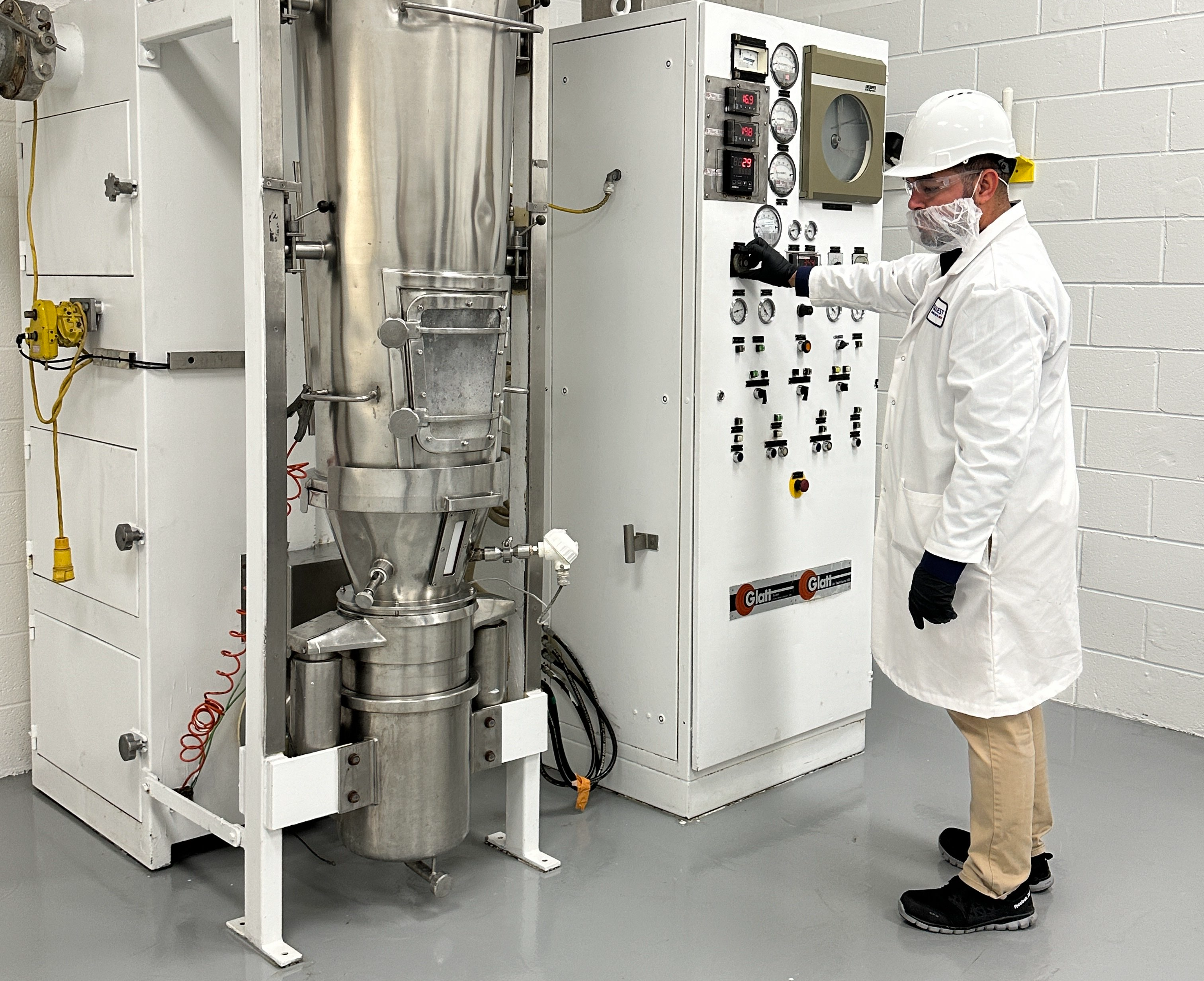Many of your customers are tired of being tired. It seems that today’s world has produced more tired people than anything else. It goes beyond the fact that the large baby boomer generation is aging; rather, it is due to several factors.
What can your customers do about it? To answer that question, our friend, The Nutrition Reporter, a.k.a., Jack Challem, A.S.N., has written a book that will surely help. No More Fatigue will be published by John Wiley & Sons this month.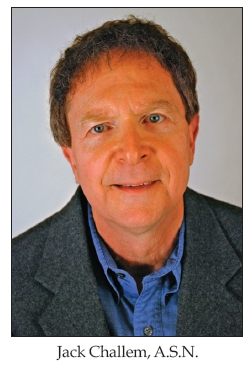
Jack Challem is a personal nutrition coach and one of America’s most trusted health writers. Many readers are well familiar with Jack Challem, as we have chatted with him in these pages many times before. He has chatted with us about several of his books as well as other topics. He has written 20 books with the most recent being Stop Prediabetes Now, Syndrome X, The Inflammation Syndrome, Feed Your Genes Right and The Food-Mood Solution. He has also published thousands of magazine articles in such publications as Alternative Medicine, Better Nutrition, Body & Soul, Experience Life, Functional Ingredients, GreatLife, Health Hotline, Let’s Live, Modern Maturity, Muscle & Fitness, Natural Products News, Natural Solutions and WellBella.
He is a member of the American Society for Nutrition and serves on the editorial board of the Journal of Orthomolecular Medicine. His scientific articles have appeared in Free Radical Biology & Medicine, Journal of Orthomolecular Medicine, Medical Hypotheses and other journals. He writes the highly regarded The Nutrition Reporter newsletter as well as articles for many publications in the United States, Canada and the United Kingdom Jack is a frequent speaker at nutritional medicine conferences and to consumer health groups.
Passwater: Your latest book is on fatigue and energy. No More Fatigue is not the first book on the subject, is it?
Challem: You’re right, but it is probably the most realistic, practical and holistic book on the subject. The subject of fatigue and energy is popular because so many people feel tired way more than they should. Fatigue, or feeling tired too much of the time, is one of the most common complaints doctors hear from their patients. As a country, we counter this fatigue with coffee to get us going in the morning, keep us productive during the day, and often at night. And then, many people wonder why they can’t sleep. You don’t have to be a rocket scientist—or a nutritionist—to realize that all the caffeine is part of the problem.
You know how strongly I am committed to the benefits and use of supplements, and I’ve been writing about supplements for more than 35 years. But, supplements are only part of a permanent solution to ending fatigue and increasing energy. Too often, people seek solutions in the form of pills, albeit natural ones, instead of correcting the real reasons why they’re tired all the time. The subject really begged for a more comprehensive discussion of the causes of fatigue and recommendations for resolving it.
Passwater: How did the idea for No More Fatigue come about?
Challem: It’s rare, outside the issue of infections, for a health problem to have a single cause. There is usually a cluster of factors setting the stage for a health problem. Heart disease and cancer are multifactorial in origin, as examples. Many other health problems, such as type-2 diabetes, are really syndromes characterized by a clustering of issues.
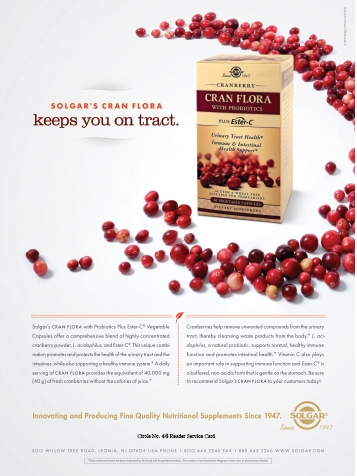 My original training, before I became interested in nutrition, was in sociology and psychology, and that training influences how I approach nutrition. For example, the way we eat does not exist in a vacuum. Eating habits are shaped by upbringing, education, peer pressure, advertising, stress and other factors. With respect to fatigue and energy levels, stress is usually the major arbiter. That’s because stress throws us off balance and affects our eating habits, hormones and risk of serious illness. Of course, most people who are tired all the time are also stressed out. Stress is a psychological and social influence, but it also affects nutrition and biochemistry.
My original training, before I became interested in nutrition, was in sociology and psychology, and that training influences how I approach nutrition. For example, the way we eat does not exist in a vacuum. Eating habits are shaped by upbringing, education, peer pressure, advertising, stress and other factors. With respect to fatigue and energy levels, stress is usually the major arbiter. That’s because stress throws us off balance and affects our eating habits, hormones and risk of serious illness. Of course, most people who are tired all the time are also stressed out. Stress is a psychological and social influence, but it also affects nutrition and biochemistry.
Anyway, we both know that many nutrients—B vitamins, coenzyme Q10, l-carnitine and others—affect energy production in mitochondria. As I was considering the many causes of fatigue, I realized we were actually dealing with what could best be described as a “fatigue syndrome.” As I was organizing my thoughts, I came up with the “five circles of fatigue.” These circles are the five major causes of fatigue, but I use circles to visualize them because they overlap like a Venn diagram, and each circle is a major influence on the subsequent ones.
Passwater: What are the five circles of fatigue?
Challem: Briefly, they are stress, eating habits (which also include the beverages we consume), hormone imbalances, chronic illnesses/medications and the aging process.
Passwater: Coming back to your earlier comments, how does stress impact fatigue and energy levels?
Challem: Quite simply, stress wears us out. People have so many ways of describing the consequences of their fatigue: wiped out, burned out, worn out, wasted, hammered, bushed, drained, whacked, zapped, zonked, run down or brain dead. This is quite a lexicon, and it reflects how common fatigue is.
I define stress as an unhealthy demand on our body or mind, something that pushes us out of our normal equilibrium. Much of the stress comes from trying to do too much, and there are many stresses, from work to relationships. Retailers usually have more to do than time to do everything. But, a lot of stress is actually self-induced. For example, when we multitask too much, it becomes a stress. We lose our mental focus. The brain has to toggle between different tasks, and multitasking can have a negative effect on our neurotransmitters. There are a couple of interesting facts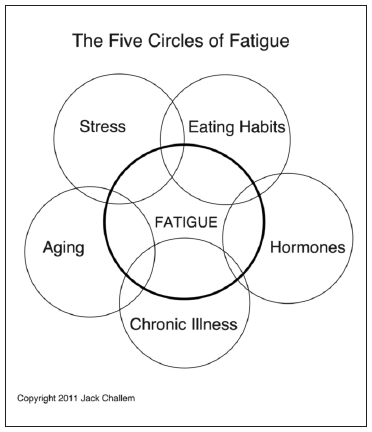 about multitasking that most people don’t understand. One is that only about 3% of people are good multitaskers. The rest are not, although they might think they are. We’ve all driven behind slow drivers who are yacking on the cell phones. They think they can multitask, but their driving suffers. The other interesting fact is that study after study has shown that people actually get more accomplished when they do one task at a time instead of multitask. Of course, that flies in the face of most corporate cultures.
about multitasking that most people don’t understand. One is that only about 3% of people are good multitaskers. The rest are not, although they might think they are. We’ve all driven behind slow drivers who are yacking on the cell phones. They think they can multitask, but their driving suffers. The other interesting fact is that study after study has shown that people actually get more accomplished when they do one task at a time instead of multitask. Of course, that flies in the face of most corporate cultures.
The other major stress that has emerged in recent years is technology addiction. Over the past 20 years, we’ve gone from working 40 hours per week to 24/7. We check e-mail early in the morning, throughout the day and late at night. Some people text compulsively—to the point where they endanger the lives of other people. The way many people interact with personal technologies is very much like obsessive-compulsive behavior, or like playing an addictive computer game. We forget there’s an off switch, or we forget that we don’t have to respond immediately to a ring or a ping. We’re simply reacting and, in the process, we forget to give ourselves quality downtime, which we need to regenerate. How can a person get enough sleep if they’re checking e-mail at 11 p.m. or midnight? These often nonstop activities increase anxiety levels, which, in turn, interfere with sleep; and when we don’t get enough sleep, caffeine becomes all the more necessary as a crutch to get us going and keeping us going. Of course, all this goes in the other direction as well. As I wrote in The Food-Mood Solution, inadequate intake of protein, B vitamins and fish oils can alter our brain biochemistry and set the stage for excessive multitasking and the irrational use of technology.
Passwater: Does stress affect eating habits?
Challem: You bet it does. There is a segue from stress to eating habits. When we feel stressed, one of the first things to change is the way we eat. We’ll delay or skip meals, which affects our blood sugar, neurotransmitters and brain waves. Our energy levels typically track with our blood sugar levels and both high and low blood sugar levels can leave us feeling tired. If we delay a meal, we’ll eventually have a blood sugar crash. Of course, nearly everyone knows how to get blood sugar back up fast: eat some junk food! That doesn’t help the situation; it just sets you up for another blood sugar crash.
So, one of the ways people compensate for low blood sugar and low energy is to drink coffee, energy drinks, soft drinks or another caffeinated beverage. I don’t have a problem with a small amount of coffee or tea in the morning. But, Starbucks’ venti-size (20-ounce) regular coffee contains 415 mg of caffeine—that is more than the amount found in any energy drink. At those amounts, it’s a drug. And, millions of people feel they need that and more caffeine to get through the day.
Adaptogens, such as ginseng and rhodiola, have their place in strengthening our stress response. But, would it make better sense to take ginseng or rhodiola for the rest of your life, or to reduce your stress and improve your sleep habits? This is what I mean when I say that supplements are part of the solution, but not the entire solution.
Passwater: What about sleep problems then?
Challem: If fatigue resulted from only a lack of sleep, it would be easy to solve—people would just need another hour of sleep. But, a lack of restful sleep is often a sign of other problems, such as excessive stress, juggling too much in life, anxiety about work and relationships, drinking too much coffee or alcohol, feeling depressed, having difficulty turning off an active brain, being addicted to late-night e-mailing and texting, and dealing with a variety of health problems. Again, the intersection of psychosocial influences and nutrition is what I have called “nutrasocial” factors. We can certainly help reduce sleep problems with a variety of supplements, but treating just the sleep problem ignores the other factors influencing sleep and fatigue. To correct the underlying or interlacing causes, you must correct the behavioral issues that interfere with a restful night’s sleep.
Passwater: What is the second circle of fatigue?
Challem: The second circle is about what we eat and drink. As you know, the typical American diet is rich in refined carbohydrates and sugars, which set the stage for prediabetes and type-2 diabetes. One sign of both health problems is fatigue. The fatigue usually appears within an hour of eating, when blood sugar climbs too high or too quickly. I think prediabetes affects around 100 million Americans, and it is one of the most under-diagnosed major health problems.
The solution is to start the day with a high-protein breakfast, such as an egg and some fresh fruit. Vegetarians can have steel-cut or Irish cut oatmeal, possibly along with amino acid supplements. The protein stabilizes and generally keeps blood sugar in a healthy range. When I do one-on-one nutrition coaching, almost everyone complains of mid-morning fatigue. When they eat a better breakfast, they feel more energized on day one.
As I mentioned, people have really become dependent on, or addicted to, caffeine to get up and keep going. I would be concerned about anyone who drinks five to 10 cups of coffee daily. I think two cups in the morning are fine, but more than that points to some other issues.
Passwater: Such as the third circle of fatigue?
Challem: Absolutely right. I think people who need a lot of caffeine are likely to have some degree of adrenal exhaustion, which might technically be called subclinical or secondary adrenal exhaustion. Adrenal exhaustion is often misunderstood, so I’ll explain a few things about it.
We need to make cortisol as part of our reserve defense against stress, and healthy people will have higher levels of cortisol in the early morning, with those levels declining throughout the day. When we’re stressed, we make large amounts of cortisol to help buffer the effects of stress. High cortisol levels increase the risk of heart disease and death. However, when we lose the ability to make cortisol, we then slip into adrenal exhaustion. Typically, a person with adrenal exhaustion will have a saliva cortisol test showing pretty flat cortisol levels throughout the day, or low cortisol in the morning and high levels in the evening.
Adrenal exhaustion is actually a good illustration of Hans Selye’s three stages of stress: alarm, adaptation and exhaustion. The first stage is a robust biological response to the stress. The second involves some measure of adaptation, but with a physiological price, such as needing coffee or feeling tired a lot of the time. When we can no longer adapt, we slip into the exhaustion stage. Quite literally, exhaustion.
To rebuild our cortisol levels, the number one supplement in my mind is licorice—specifically the non-DGL (non-deglycyrrhizinated) form. Many licorice supplements are deglycyrrhizinated to prevent an increase in blood pressure. But, low blood pressure and dizziness when standing up are common signs of adrenal exhaustion. Glycyrrhetinic acid inhibits the body’s breakdown of cortisol, so non-DGL licorice can help restore normal cortisol levels. The B-complex vitamins, particularly extra pantothenic acid, along with vitamin C help rebuild the adrenals. And of course, adaptogenic herbs are important here, including rhodiola, ginseng and ashwagandha. A higher protein diet is important. As people recover, they need less caffeine.
I happen to think that adrenal exhaustion is very common. If it wasn’t, Starbucks would have never sold so much coffee and become a huge corporation. I know someone who, years ago, drank two pots of coffee a day to keep going on her job and overtime. She was eventually diagnosed with chronic fatigue syndrome, but I’m convinced that she was in adrenal exhaustion before developing chronic fatigue syndrome. Adrenal exhaustion, because it weakens you, leaves you more susceptible to a variety of other serious illnesses.
Passwater: What about hypothyroid?
Challem: This, too, is a very common cause of fatigue. In middle-age women in particular, there is often an overlap of low estrogen, low progesterone, low thyroid and insulin resistance—all contributing to fatigue. This is very important: if someone has both adrenal exhaustion and low thyroid, the adrenal exhaustion must be addressed first. If it’s not, it will make the whole situation worse.
Low thyroid is far more common than hyperthyroid. Three nutrients play crucial roles in the production of thyroid hormones: L-tyrosine, iodine and selenium. The T4 form of thyroid hormone contains four atoms of iodine, and selenium-dependent enzymes are needed to convert it to the active hormone form, which is T3. To assess your thyroid hormone levels, you need your doctor to do a full thyroid panel, not just thyroid-stimulating hormone or T4. If most of the numbers in the thyroid panel seem normal, look closely at your T3 levels. If they’re low—even low normal—that’s a sign that the body is not converting T4 to T3. In this case, selenium supplements can help boost T3 levels, and one recent study found that 200 mcg daily of selenium reduced thyroid antibodies in people with Hashimoto’s, an auto-immune reaction that causes low thyroid. A lot of doctors miss the subtleties with thyroid hormones. If someone has to take prescription thyroid hormone, I recommend the natural (porcine) Armour Thyroid (Forest Laboratories), not the synthetic forms. Synthroid (Abbott Laboratories) is only T4, and that won’t help everyone who needs it.
Passwater: What’s the fourth circle of fatigue?
Challem: It’s chronic illness, along with over-the-counter and prescription medications. This is the part of the book where I address fatigue when it is part of heart disease, cancer, multiple sclerosis, chronic fatigue syndrome and fibromyalgia. Part of the problem involves chronic inflammation, and pro-inflammatory cytokines (cell communication molecules) can cause fatigue. This is part of the reason why allergies cause fatigue.
I couldn’t cover every disease in this chapter, so I decided to address some of the more important ones and use them as a template of sorts for improving energy levels in other illnesses. Part of the solution is using mitochondrial nutrients, such as coenzyme Q10, L-carnitine, alpha-lipoic acid and B-complex vitamins. Mitochondria are the energy factories in cells, and they are often either damaged or weakened in chronic illnesses. Mitochondrial nutrients provide the biochemical building blocks for mitochondria. A protein-centered diet, plus a lot of green vegetables, is of great help here. Animal protein provides the nutritional building blocks of mitochondria, and green leaves (e.g., spinach and dark lettuces) provide chloroplasts, the plant equivalent of mitochondria.
More than 500 different medications can cause fatigue as a side effect. These drugs are big contributors to why people feel tired all the time. Statins cause microscopic damage to muscle tissue within a couple days of starting the drug, and the mitochondria in muscle cells are where the body makes most of its energy. Chemo drugs wipe people out; have you ever seen a person with cancer who has boundless energy? Some of the problematic medications include oral antibiotics, allergy drugs, analgesics, antidepressants, antihistamines, benzodiazepines, blood pressure drugs, diuretics and sleep medications—pretty much what millions of people are taking every day.
Passwater: What’s the fifth circle of fatigue?
Challem: This is the aging process, and it impacts fatigue and energy levels in two principal ways. First, if we don’t take good care of ourselves—by eating right, maintaining healthy hormone levels, and taking supplements, among other things—we will accelerate our aging process. As you know, this is about biological age versus chronological age. I work hard at maintaining a young biological age, and most people assume I’m 10 years younger than I really am. Second, while we can slow the aging process, we can’t stop it completely. We lose muscle with age, even if we exercise, and with that loss of muscle comes a loss of mitochondria. Nobel laureate Albert Szent-Györgyi, M.D., Ph.D., noted that energy was the “currency” of life. It really is important to maintain a lot of mitochondria and as much muscle as possible. So, the aging process itself becomes a pressure point on our energy levels.
Passwater: What about exercise and mitochondria?
Challem: The best way to increase or maintain relatively large numbers of mitochondria is through regular exercise, though I prefer to use the phrase “physical activity.” The conundrum is that most people who feel tired all the time can’t imagine having the energy to exercise or to be more physically active in general. Once upon a time, I was a couch potato. Now I exercise almost every day. Exercise increases energy levels—by improving our ability to burn carbohydrates and fats for energy. But, couch potatoes have to start an exercise regimen slowly, such as by walking. Over several weeks, they can increase their distance and speed.
Let me give you an example of the situation many people find themselves in: Their cholesterol levels are elevated, and so their doctors prescribe statin drugs. High cholesterol has very little to do with diet—it’s a sign that a person isn’t physically active. So the statin drug lowers cholesterol, but it damages muscle in the process. A person becomes more tired and even less inclined to exercise.
There are some foods and supplements that can also increase mitochondria and improve muscle density. Eating a high-protein diet helps. After all, muscle is made from protein. There has been some intriguing research showing that high-dose quercetin—1,000 mg daily—can increase mitochondria above and beyond exercise alone. Taking multi amino acid supplements also can help build muscle, particularly in seniors.
Passwater: Let’s talk a little more about sleep issues.
Challem: Many people have difficulty getting a restful night’s sleep, and I hear the most complaints from middle-age women who wake up in the middle of the night with hot flashes or night sweats. Sleep-inducing drugs are awful; they often don’t work, or they cause over-eating and nightmares. There are many natural supplements that can improve sleep, including L-tryptophan, 5-HTP, melatonin and various herbs. Again, it’s important to look at the total picture of one’s life. If you drink caffeine in the afternoon or evening, don’t expect to get a good night’s sleep; you’ve got to stop consuming caffeine, including so-called decaf in the afternoon and evening. You can’t be on your computer until midnight and then instantly turn off and go to sleep. So, part of the solution is preparing for sleep—softer lights, music or a book instead of television.
It’s also important to prepare your bedroom for sleep. Treat your bedroom as a sacred space. This room is for sleep, cuddling, pillow talk and sex—not for watching television, using a computer or cell phone, or reading. If you keep a phone in the bedroom, turn off the ringer. Try not to over-furnish the bedroom and don’t use the room (including the space under the mattress) for storage. Make sure you have a comfortable mattress and pillow and that the bedroom is not too warm; a slightly cool room is best for sleep. In addition, minimize your exposure to light, which may mean removing all but the dimmest night lights and getting thick drapes to block ambient light from outside. If you use an alarm clock, turn it away from you; otherwise, its light will register with your brain (through your closed eyelids) and can interfere with sleep. If you wake up in the middle of the night, you really don’t need to know what time it is and how many hours you have left before the alarm rings.
Passwater: So, what you’re really advocating is an integrated approach to reduce fatigue and improve energy levels.
Challem: Absolutely right. I wish there was a simple solution to ending fatigue and boosting energy, but there isn’t. So many of us work under a 50-ton weight called stress, and stress throws off our equilibrium. I wish there was a single supplement or food that would improve things. To banish fatigue and boost energy levels, we have to be cognizant of the many factors that can drain our energy, and we have to be mindful of them every day. We have to draw on multiple resources—stress resistance, diet, supplements and so forth—to have the vitality we want to do everything we want in life.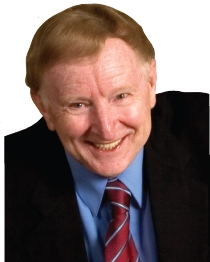
Passwater: Thank you very much. Readers may wish to visit you at your Web site at http://jackchallem.com/index.html and examine your newsletter, The Nutrition Reporter, at http://jackchallem.com/pages/newsletter.html.
Challem: You’re welcome. I enjoyed our conversations, and I appreciate all the hard work of health and natural food retailers. WF
The Nutrition Reporter is a trademark of Jack Challem.
Dr. Richard Passwater is the author of more than 40 books and 500 articles on nutrition. He is the vice president of research and development for Solgar Vitamin and Herb. Dr. Passwater has been WholeFoods Magazine’s science editor and author of this column since 1984. More information is available on his Web site,
www.drpasswater.com.
Published in WholeFoods Magazine, March 2011









